Pleasant temperatures, family time, and the annual Perseid meteor shower come together to make this week an astronomical highlight of the year.
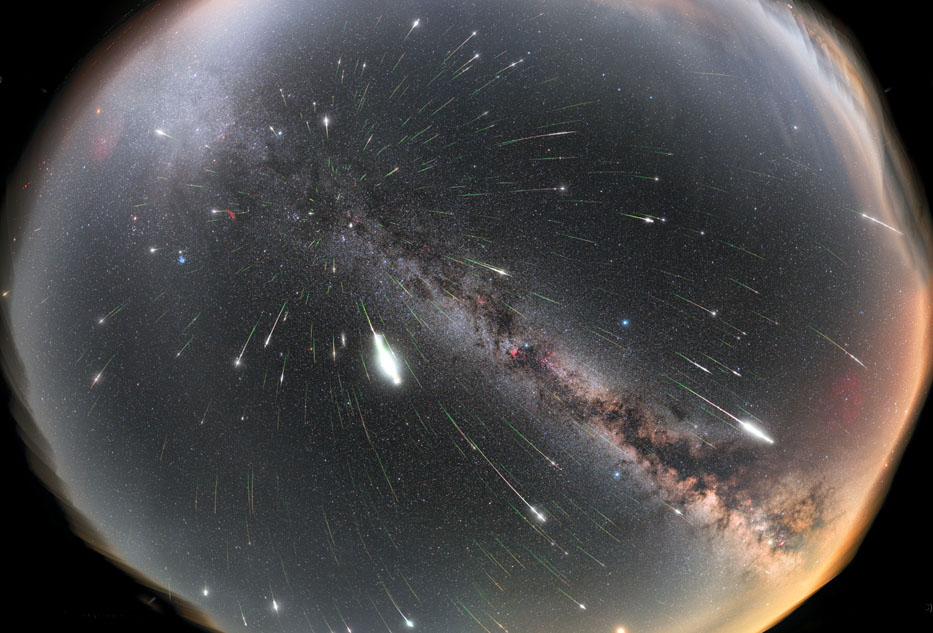
The Perseid meteor shower is like no other. Every August it delivers up to 100 meteors an hour in pleasant weather conducive to getting outside and staying up late. What's more, most kids still aren't in school, making it possible for the entire family to enjoy the event. The shower's unique combination of richness and accessibility makes it the one best known to the public.
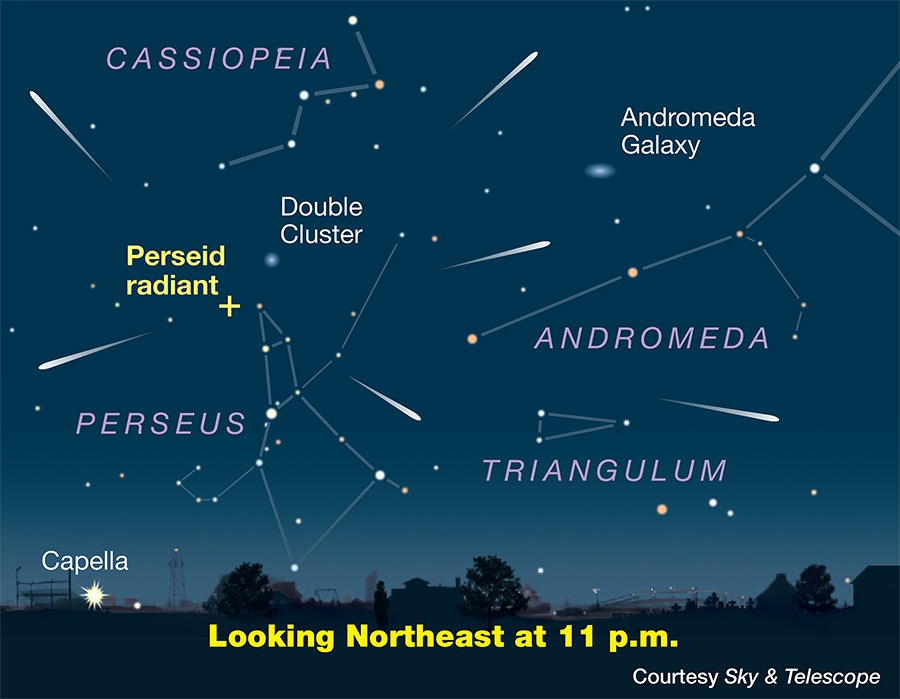
Nevertheless, this year's Perseids may put skywatchers in something of a pickle. The shower peaks on Tuesday night August 11–12 with the maximum occurring between 2–4 a.m. on the 12th. But just as things start heating up, the last-quarter Moon makes an appearance, rising around midnight. While not a shower-killer, it will filter out the fainter Perseids and lower meteor counts.

CC SA 3.0 / Dual Freq
One hundred meteors an hour is an idealized maximum from a dark sky on a moonless night with the radiant overhead. But given that light pollution is a fact for many of us, a more reasonable expectation would be 30–50 meteors an hour. The number of meteors you'll see depends a lot on the altitude of the radiant, the point in the sky from which these javelins of light appear to emanate. At nightfall the Perseid radiant hunkers low in the northeastern sky. Early evening activity is low because the horizon cuts off most of the meteors that flare below the radiant. But around midnight, when Perseus has climbed to around 30° altitude, meteor counts rise and continue climbing until dawn.
Viewing options
If you're scratching your head wondering when it's best to sacrifice your precious sleep, consider these possibilities:
- Begin at nightfall. Although the radiant will be very low this is the best time to catch sight of Perseid earthgrazers — long, slow meteors that graze the atmosphere at a glancing angle like a stone skipping across a pond.
- Start around 11 p.m. and watch until 12:30 a.m. (a little past moonrise) to see a modest number of meteors in a dark sky.
- Catch the peak from 2–4 a.m., trusting that lunar glare won't compromise the shower overmuch.
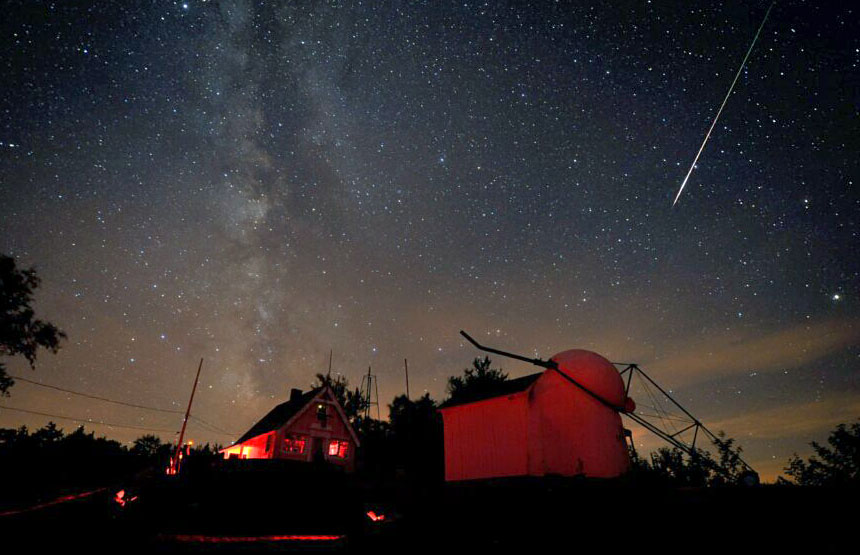
Sky & Telescope / Dennis di Cicco
No matter which option you choose (maybe you're lucky enough to consider all three!), observe from as dark a location as possible while settled in a comfortable reclining chair. There's no need to face the radiant directly as meteors will appear all over the sky. I like to keep Perseus off to one side, facing either north or east, the better to see a mix of short- and long-trailed meteors.
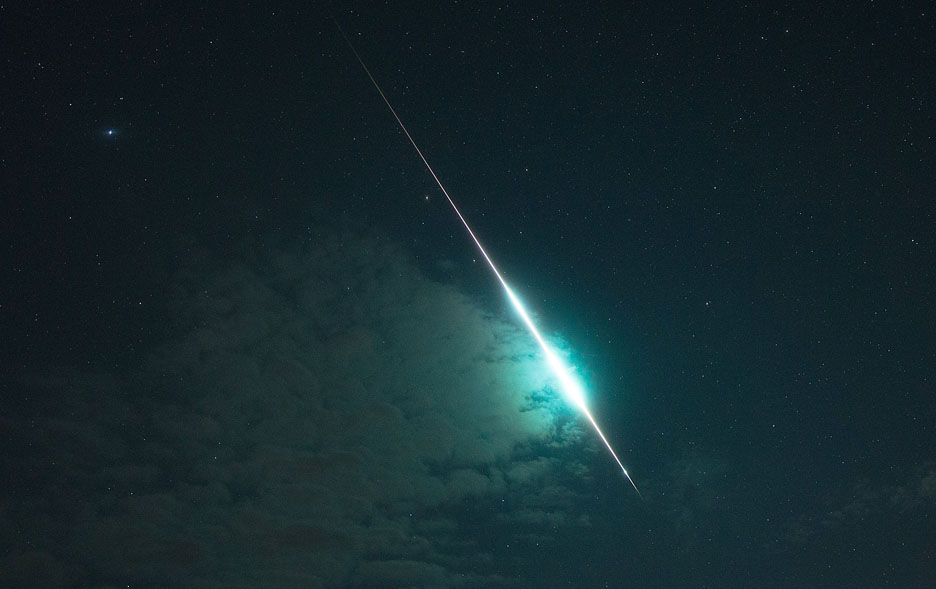
Catalan Tapardel
Each sudden flash of a meteor will come as a pleasant surprise. Sometimes I'll set a goal of spotting 25 or 30 Perseids, but I always stay longer and see more because I love the sense of anticipation and the guarantee of a prize. Makes me feel like a kid again.
Should clouds interfere during the shower's peak, don't despair: It will remain active at roughly half-strength from August 10–14. You can also watch the shower live online on at Gianluca Masi's Virtual Telescope Project site on August 11th starting at 22:00 UT (6 p.m. Eastern Daylight Time). See also feeds from the Instituto de Astrofísica de Canarias, which contain comments and infographics (in Spanish) or only music, beginning August 12th around 7:15 p.m.
What is a meteor anyway?
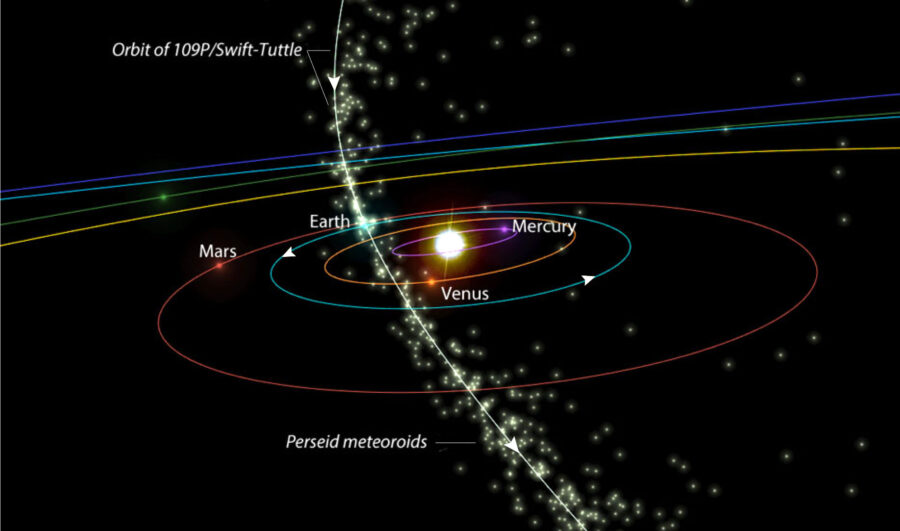
Visualization: Ian Webster / Data: NASA / CAMS / Peter Jenniskens (SETI Institute)
Perseids originate from Comet 109P/Swift-Tuttle, discovered in 1862 by American astronomers Lewis Swift and Horace P. Tuttle. The comet takes 133 years to orbit the Sun and made its most recent pass by Earth in 1992. Right now, it's extremely distant — more than 3.7 billion miles (6.0 billion km) away, currently far beyond Pluto — but will return to the inner solar system in 2126 as a bright, naked-eye object.
Despite its current remoteness, each time Swift-Tuttle returns to the inner solar system, solar heating sublimates some of its dirty ice. Particles locked in that ice, ranging from sand-sized grains up to mini-marshmallows, are released and deposited as strands of debris along the comet's orbit.
Each August, Earth crosses the comet's path and hurls headlong through the flotsam and jetsam the same way you'd drive into a sudden snowstorm on the freeway. But instead of snowflakes striking a glass windshield and peeling off to the sides, cometary grit slams into the planet's atmosphere at more than 215,000 kilometers an hour and vaporizes in the heat of friction some 100 kilometers overhead.

Wikipedia / Public domain
The intense heat generated by the particle's passage ionizes air molecules along its path. When those ions recombine they release energy in a brief burst of light. This light combined with that of the vaporizing meteoroid create the shooting-star effect. In reality a meteor is a narrow a column of light less than a meter across but tens of kilometers long.
The amount of dust and rock fragments sloughed off by Comet Swift-Tuttle varies with each revolution to create debris strands of different density and width that account for variations in the strength of the shower over time.
Future and past
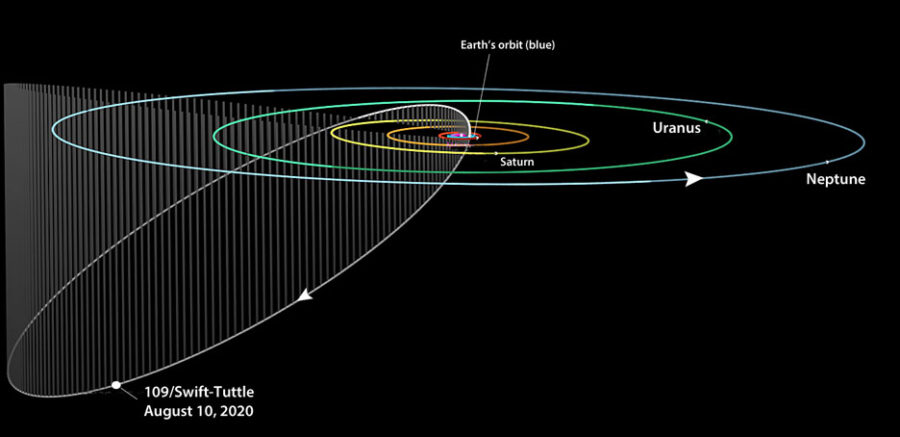
JPL / Horizons
Because the comet's perihelion lies just inside Earth's orbit it makes frequent close approaches to our planet. That and its large size inspired radio astronomer Gerrit Verschuur to describe it as "the single most dangerous object known to humanity" in his 1997 book Impact!: The Threat of Comets & Asteroids. Good thing we get to enjoy it safely — one grain at a time.
Astronomers were unaware of the Perseid shower's existence until the mid-1830s when two American scientists — Edward Herrick and John Locke — along with the Belgian statistician Adolphe Quetelet noticed an unusual number of meteors on the night of August 9–10. Their subsequent research confirmed the existence of the shower with the radiant in Perseus.
But that wasn't the end of the story. In their studies Herrick and Quetelet chanced upon a reference in an English farmer's almanac describing how the "burning tears of St. Lawrence" appeared in the night sky every August 10th. For ages, Catholics in Germany and England had been commemorating the date of his martyrdom on August 10, 258, when Lawrence was apparently burned in a gridiron over hot coals. What had been dismissed as a folk tale turned out to be evidence for the Perseid meteor shower's ancient roots. For the full story click here.
As a personal aside, my mother passed away two years ago on August 12th during the Perseid peak. Each year when I see the "tears of Lorraine" streak across the sky I sense her presence and remember her goodness.
 15
15









Comments
Rod
August 10, 2020 at 3:08 pm
Bob King, Perseids are always fun. This morning I did observe some Perseids, from my stargazing log. [Yes I did see two Perseids while out viewing Mars and the Moon with my 90-mm refractor telescope. Observed 0002 EDT - 0105 EDT. Last Quarter Moon 11-Aug-2020 at 1645 UT/1245 EDT. Shortly after 2400 EDT (0402 UT), I observed (unaided eyes) one bright Perseid meteor streak by Alpheratz in Andromeda, about as bright too or mv+2.06. Perseids move about 59 km/s. The peak is expected 11-12 August 2020. Mostly clear skies early this morning so I went out looking for some Perseids and Mars observing. At 0102 EDT or 0502 UT, I observed another Perseid streak by in Pegasus. It was about mv +3.0 or so. I enjoyed Mars and lunar observing with my telescope. Some very good views of Mars at 179x. The south polar cap very distinct and surface features too. No filters used. The Moon was very nice with numerous craters in south limb around Calvius crater area and terminator line. There was occasional fogging of my eyepiece though due to temperature and humidity level outdoors.]
You must be logged in to post a comment.
Bob KingPost Author
August 11, 2020 at 12:59 am
Hi Rod,
I always enjoy reading your observing reports. Good luck on Tuesday night!
You must be logged in to post a comment.
Anthony Barreiro
August 10, 2020 at 7:39 pm
Thanks Bob! The animation gives a bird's eye view of what's going on, and Mark Littman's history of the discovery of the Perseids is interesting.
Here in the city I don't try too hard to see meteors, but I keep an eye out for the highly active showers and usually see at least a couple. I saw a Perseid before dawn Saturday August 8. If the weather cooperates and I can get time off work, I try to go camping on Mount Diablo when the Perseids coincide with the dark of the Moon every three years. Fingers crossed for next year.
I'm sorry for the loss of your mother. She sounds like a wonderful person. Two years is not that long. It's sweet that you can remember her while watching the Perseids.
You must be logged in to post a comment.
Bob KingPost Author
August 11, 2020 at 1:01 am
Hi Anthony,
Thank you for that. She was a wonderful person. I try as best I can to carry that forward as I stumble through life.
You must be logged in to post a comment.
Anthony Barreiro
August 11, 2020 at 8:40 pm
We all have guardian angels, whispering encouragement as we stumble through life.
I hope you see a lot of meteors tonight. San Francisco will be blanketed with clouds and fog tonight, but we should get a break tomorrow night and Thursday morning.
You must be logged in to post a comment.
Joe P.
August 13, 2020 at 10:32 pm
Each loss leaves a _hol_y place
around us and within;
if we with care will enter there,
something may begin . . .
You must be logged in to post a comment.
Bob KingPost Author
August 15, 2020 at 11:36 am
Hi Joe,
Thank you for that. How kind of you.
You must be logged in to post a comment.
CHRIS
August 12, 2020 at 11:27 am
I saw very few until 4:10 MDT then things picked up for about thirty minutes, including a short bright one I caputured with my intervoltameter and tracking mount. I'll try to upload it.. 25s at ISO 800, f2.8.
You must be logged in to post a comment.
CHRIS
August 12, 2020 at 11:31 am
Obviously this is an average NEOWISE image, not the Perseid.
You must be logged in to post a comment.
Bob KingPost Author
August 15, 2020 at 11:42 am
Thanks, Chris for your report. I thought the shower was slow this year.
You must be logged in to post a comment.
Robert-Casey
August 12, 2020 at 1:59 pm
I saw one meteor last night. but I was only outside for a few minutes around midnight, in a severely light polluted area 14 miles from New York City. Would have stayed out longer, but I was too tired to say awake...
You must be logged in to post a comment.
Bob KingPost Author
August 15, 2020 at 11:41 am
Hi Robert,
Thanks for your report. Love the honesty. I was out for an hour or so with passing clouds on Aug. 11 (11 p.m. -12:30 a.m.) and only saw 9 or 10. Thoroughly enjoyable though!
You must be logged in to post a comment.
Numerics
August 12, 2020 at 4:45 pm
This for me this is a touchstone. Aug 12, 1980, I was riding my motorcycle across the country from Chicago to Tucson Az to attend the U of A. Traveling in Colorado late night about 200 east of Denver the night sky lit up with Showers, some bolides.. it was an awesome sight. A couple of weeks later I was at the start of my college days at the University of Arizona taking Astronomy-physics as a major. Several years later, in an Astronomy 499 elective, the teacher had me work out the orbital dynamics of Swift-Tuttle... but at that time, we thought the period was 120 years... needed that recovery to really nail it down. In 40 years, I have never seen a meteor-shower that bright, and awe-inspiring as 1980.
You must be logged in to post a comment.
Bob KingPost Author
August 15, 2020 at 11:39 am
Hi Numerics,
Thank you for sharing your tale of excitement. What a thing to have in the back of your mind while you worked on Swift-Tuttle's period. An inspiration!
You must be logged in to post a comment.
Richard-Smith
August 16, 2020 at 7:24 pm
I was lying on a bench on my backyard deck and saw one Perseid in an hour's viewing (I'm about 30 miles northeast of San Francisco so medium light pollution). But the most exciting thing was that a great snowy owl with a six-foot wingspan flew directly over me just after I saw the meteor.
You must be logged in to post a comment.
You must be logged in to post a comment.